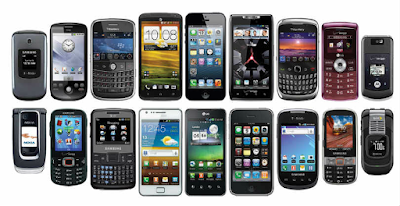There are lots of factors for a successful recycling campaign. Many research studies have been conducted throughout the decade to assess the impact of recycling campaigns on people. Majority of them have revealed that people are encouraged to recycle but still do not have a clear concept in recycling which is actually defeating the whole purpose of recycling. Also, they are not recycling electronic gadgets properly. Even now, if anyone is thinking to sell their used Samsung in Montreal,they are not doing it properly. It is important to make people understand the purpose of recycling and hence it is imperative to involve them in each step.
Making them Understand the Purpose
The first place to start the process is by asking questions like what will make recycling easier for people and what is making it difficult for them to understand. You can ask the community people regarding various kinds of trashes and the process to dispose of them. By doing this, you can evaluate whether they are actually contributing to recycling in the proper manner. In most cases, it is found that people are confused regarding the process of disposal and also the products that can be recycled leading to using the incorrect recycle bin to dispose of products.
To get rid of this confusion which is the primary hindrance, workshops were conducted to make people understand the difference between recyclable products and the non-recyclable ones. Sometimes, distributing postcards also help enlightening people to understand and sort out the confusion regarding objects. Eminent social psychologist Dan Ariely has revealed in his case studies that people are more likely to indulge in desired behavior when served with particular steps in small pieces because it not overwhelming.
Such programs were further promoted through other media including Internet and neighborhood association's monthly newsletter. This is capable of reducing contamination by more than 40%. These steps have helped in discovering the benefits and barriers of the recycling campaign. Here are some of those discoveries:
- Community Association- Working with trusted source within the community helps reaching out to the people. The local group helped to rope in participants for the focus group. It also aided in promoting the materials developed to raise awareness regarding the recyclable and and non-recyclable items.
- Knowing the Audience- Interacting with the target audience with the help of focus group and the surveys can be extremely valuable. It provides an idea of motivators and barriers faced by the residents. This helps put a face to the program which is more recognizable.
- Use of Signs- These will lead people to dispose of items properly.
- Specific Actions- Through the postcards and newsletters, the residents were provided with a particular set of actions every month. This helped them remain focused instead of feeling overwhelmed.
- Measurable Outcome- Measuring the impact of a particular project is the most important thing. Incorporating measurement tools to gauge the impact is essential. Here, success can be measured by counting the items disposed of by residents.
- Sustainability- Tracking sustainability of the projects is also important and it shows with the results. If the percentage of contamination does not increase that can be considered as a positive sign. The program will remain and it is long lasting.
- Applicability- The applicability of the program should be increased and spread among people.
Measuring the success of the recycle campaigns is important. These are some ways in which you can measure the success and also know whether it is sustainable. By involving people into the campaigns will not only get rid of confusion, but also help in making the programs a success.

